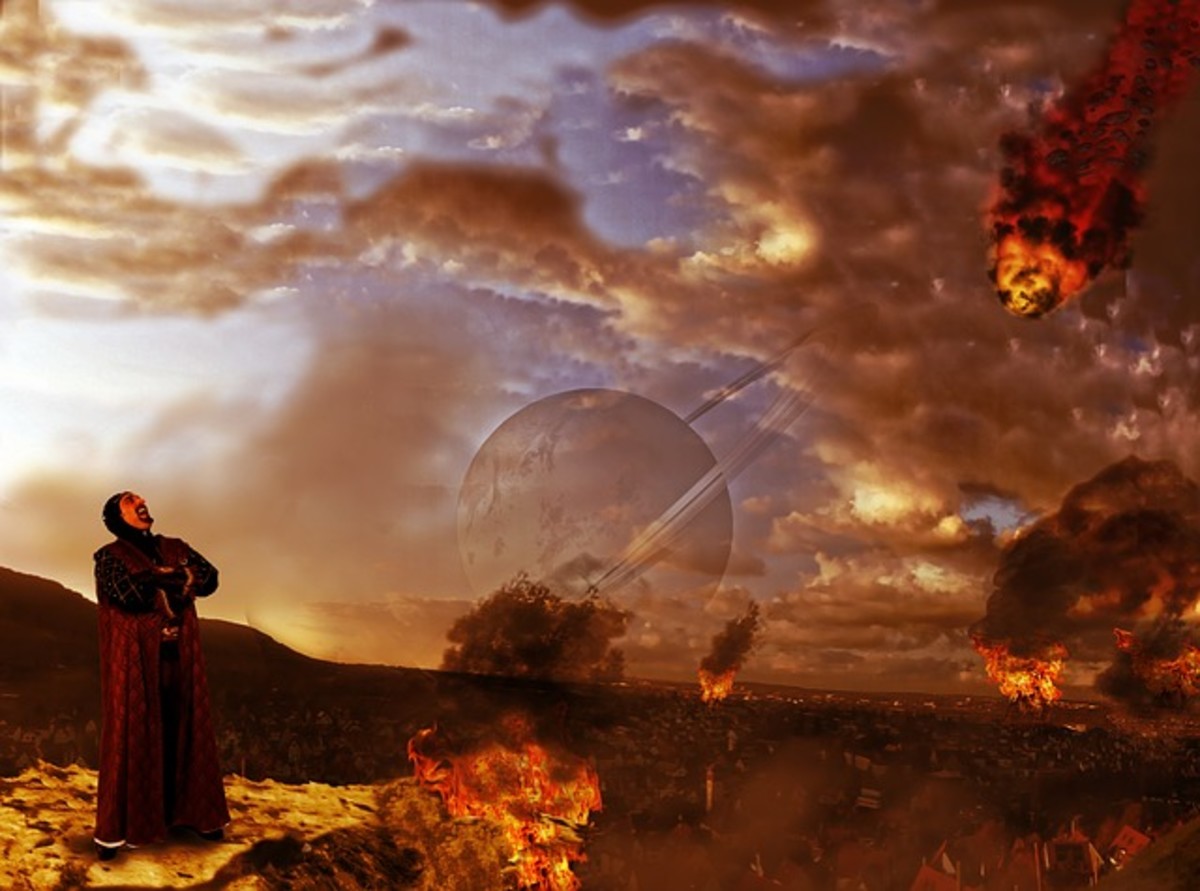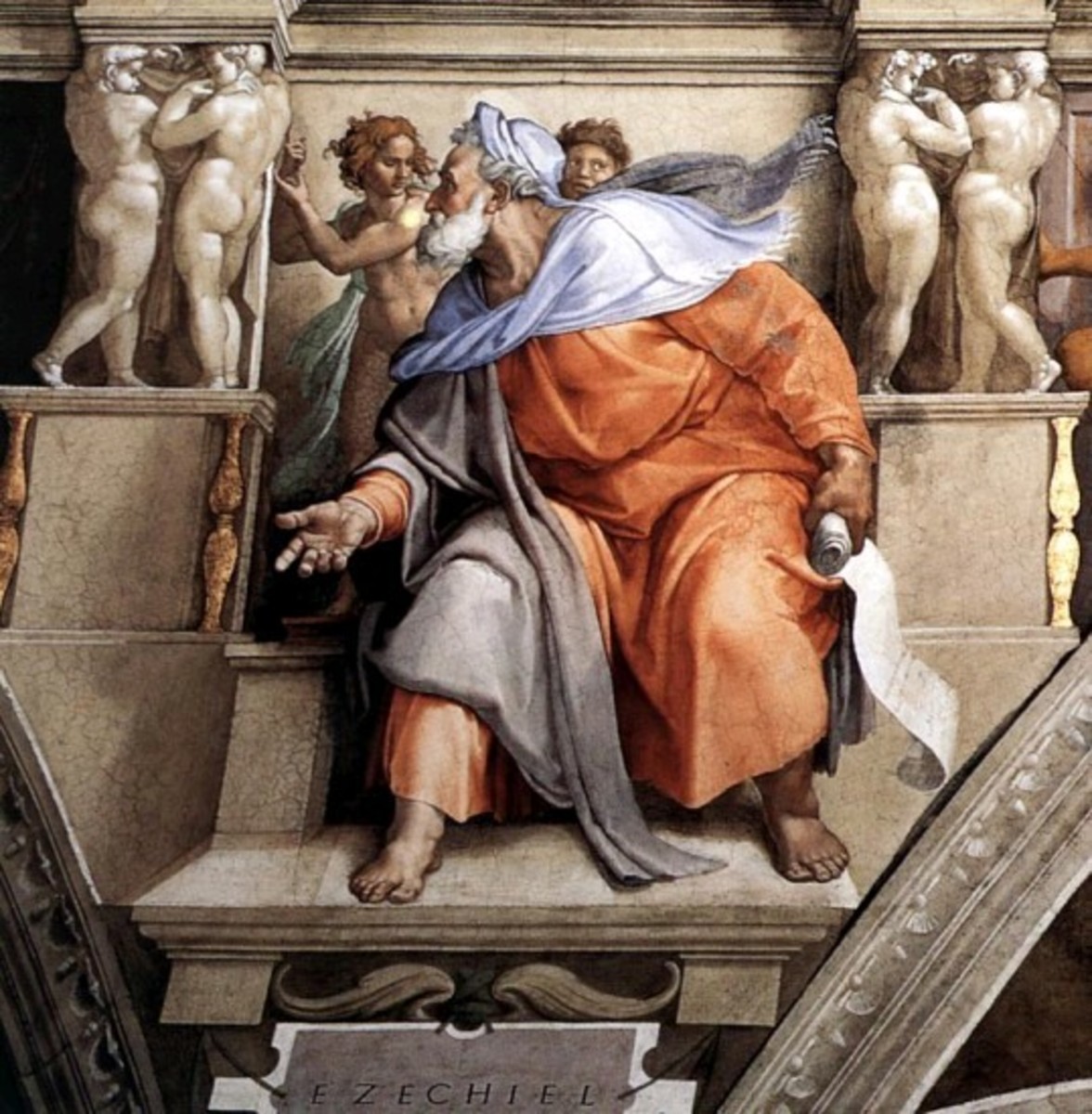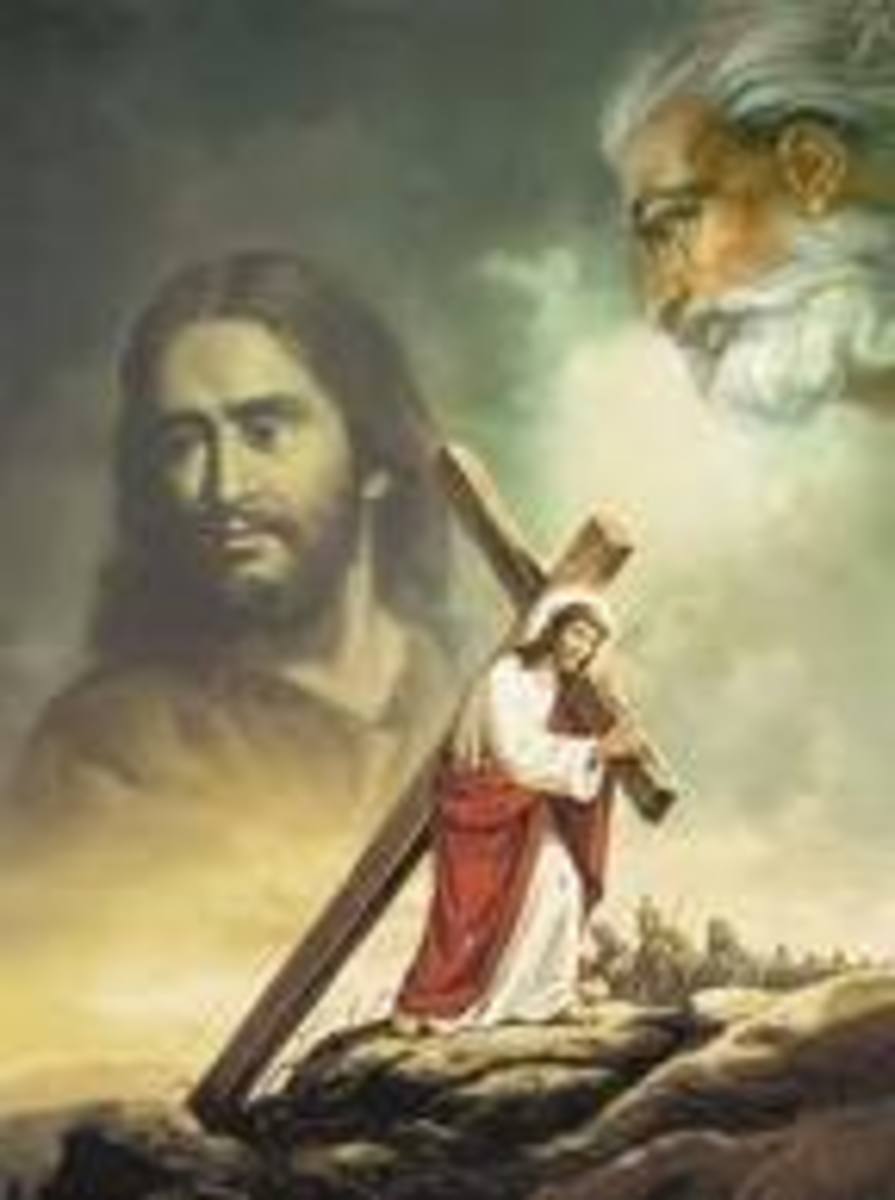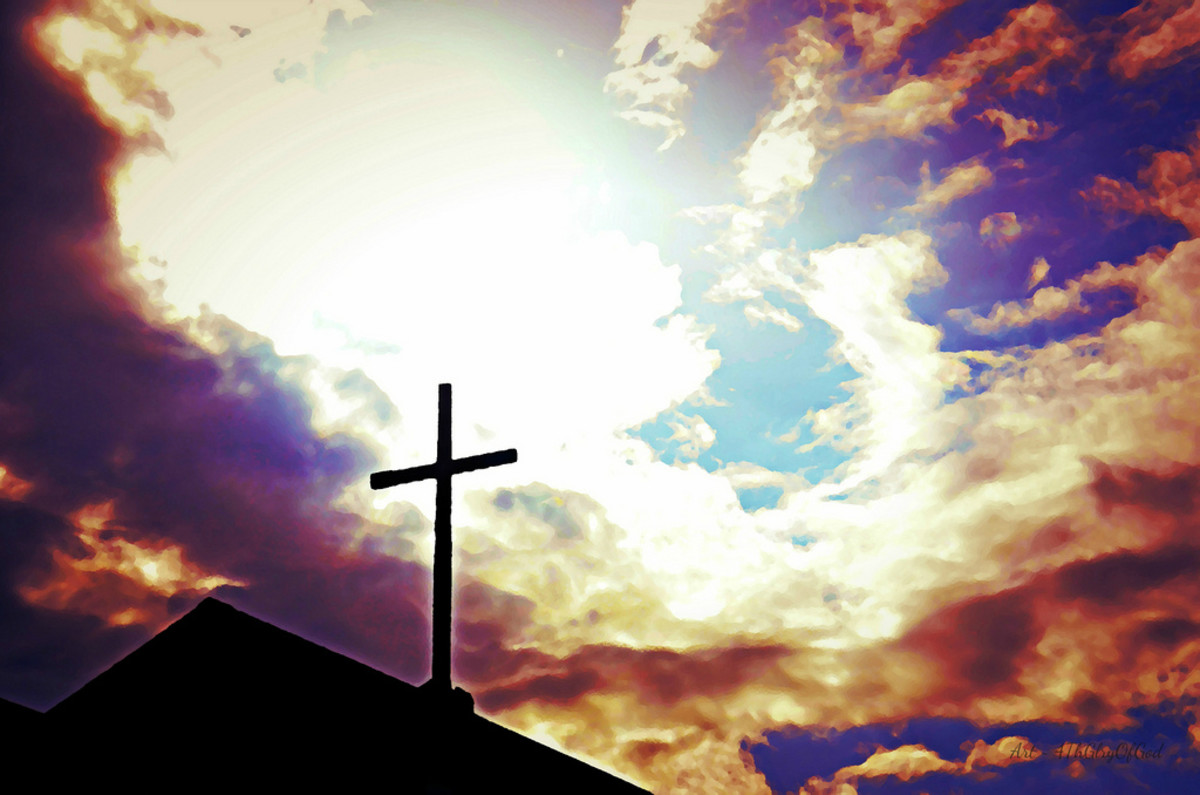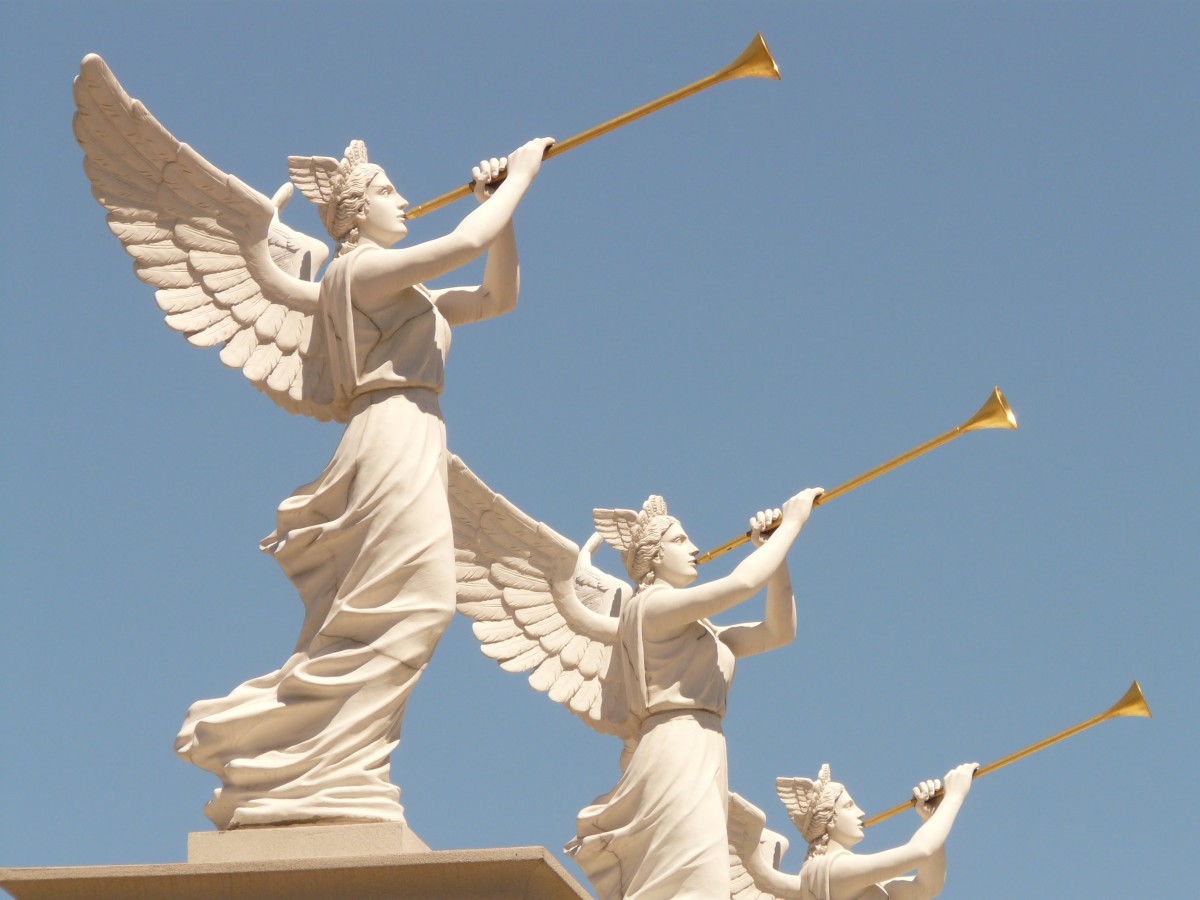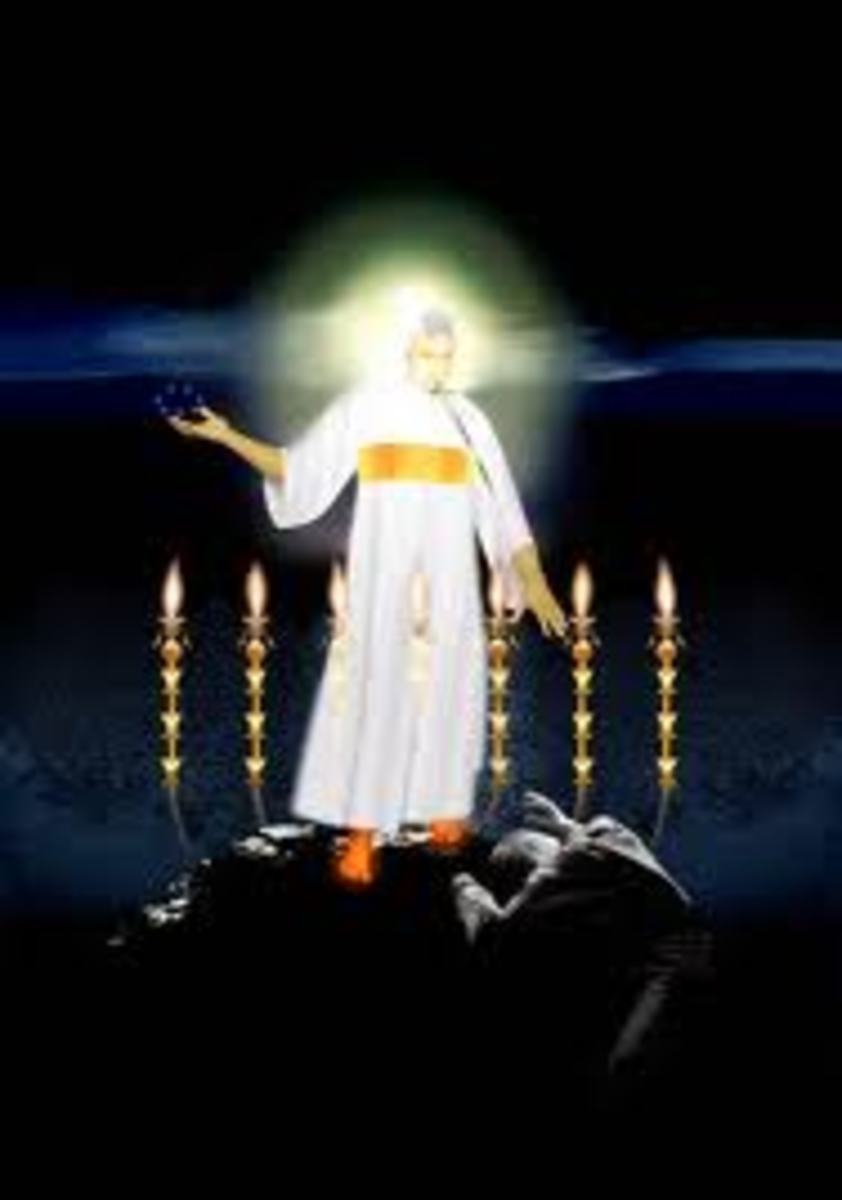The Ascension of Christ and the ‘In Like Manner' Question
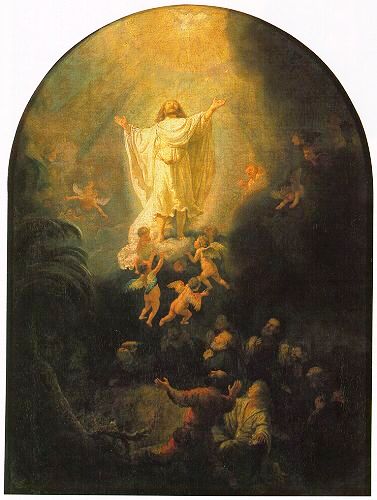
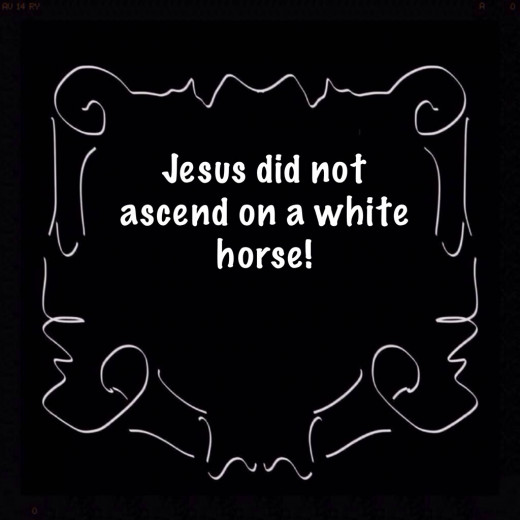
Introduction
The 'In Like Manner' Question
Most scholars today, especially the proponents of Dispensationalism, insist Christ will return in the future 'in like manner' to His ascension, with emphasis on Him returning with the same body in which He ascended.
By allowing Scripture to interpret Scripture I will seek to prove otherwise. In my opinion, 'in like manner' does not mean in 'exact same' manner.
Will Christ really return with the same body in which He ascended? Let us examine the implications of such a claim.
The Ascension and Christ's Second Coming
Act 1:9-11 And when he had spoken these things, while they beheld, he was taken up; and a cloud received him out of their sight. 10 And while they looked stedfastly toward heaven as he went up, behold, two men stood by them in white apparel; 11 Which also said, Ye men of Galilee, why stand ye gazing up into heaven? this same Jesus, which is taken up from you into heaven, shall so come in like manner as ye have seen him go into heaven.
The following comparisons reveal little similarity between these events:
Angels
2Th 1:7-8 KJV And to you who are troubled rest with us, when the Lord Jesus shall be revealed from heaven with his mighty angels, 8 In flaming fire taking vengeance on them that know not God, and that obey not the gospel of our Lord Jesus Christ:
Mat 25:31 KJV When the Son of man shall come in his glory, and all the holy angels with him, then shall he sit upon the throne of his glory:
Only two angels appeared at the ascension…Acts 1:10, but the Scriptures teach Christ would return with all the holy angels.
Trumpet
Mat 24:31 KJV And he shall send his angels with a great sound of a trumpet, and they shall gather together his elect from the four winds, from one end of heaven to the other.
Jesus ascended silently, yet those who propose a future return believe He will come with the literal sound of a trumpet.
Every Eye
Rev 1:7 KJV Behold, he cometh with clouds; and every eye shall see him, and they also which pierced him: and all kindreds of the earth shall wail because of him. Even so, Amen.
Jesus ascended visibly in the presence of a handful of disciples; Dispensationalism teaches that literally every eye shall see Him at His return.
White Horse
Rev 19:11 KJV And I saw heaven opened, and behold a white horse; and he that sat upon him was called Faithful and True, and in righteousness he doth judge and make war.
Jesus did not ascend on a white horse!
'Yet a little while, and the world seeth me no more...'
Joh 14:19 KJV Yet a little while, and the world seeth me no more; but ye see me: because I live, ye shall live also.
A major premise of Dispensationalism is that Jesus will return in the same body and physical appearance in which He ascended. Obviously, to accommodate the theory that He will literally sit on a throne in Jerusalem; even although He said ‘Yet a little while, and the world seeth me no more’.
The Ascension and John’s Vision of Christ
Rev 1:13-16 KJV And in the midst of the seven candlesticks one like unto the Son of man, clothed with a garment down to the foot, and girt about the paps with a golden girdle. 14 His head and his hairs were white like wool, as white as snow; and his eyes were as a flame of fire; 15 And his feet like unto fine brass, as if they burned in a furnace; and his voice as the sound of many waters. 16 And he had in his right hand seven stars: and out of his mouth went a sharp twoedged sword: and his countenance was as the sun shineth in his strength.
Jesus appeared to John on Patmos in His post-ascension form, and what he described was resplendently different to the Jesus he had known.
Although He is the same Jesus there can be no doubt His appearance now emphasises His glorification and deity.
Daniel's Prophecy
Dan 7:13 KJV I saw in the night visions, and, behold, one like the Son of man came with the clouds of heaven, and came to the Ancient of days, and they brought him near before him.
John could only say that the One he saw was like the Son of Man described by Daniel in his Messianic prophecy.
1Jn 1:1 KJV That which was from the beginning, which we have heard, which we have seen with our eyes, which we have looked upon, and our hands have handled, of the Word of life;
'and our hands have handled' John had seen and touched Jesus during His earthly ministry; he witnessed His transfiguration and was one of those taught by Him for forty days after His resurrection. If we also take into consideration the post resurrection appearances of Christ to 500 witnesses, we must conclude they already knew what Jesus looked like. Yet, clearly there was a significant difference between Christ prior to His ascension and Christ of the Revelation.
1Jn 3:2 KJV Beloved, now are we the sons of God, and it doth not yet appear what we shall be: but we know that, when he shall appear, we shall be like him; for we shall see him as he is.
'for we shall see him as he is' John wrote in his 1st Epistle ‘it doth not yet appear what we shall be’ then added ‘when he shall appear, we shall be like him; for we shall see him as he is’. Why did John make this statement if he believed Jesus would return looking the same as at His ascension?
A Quote from Adam Clarke's Commentary on the Bible
1 John 3:2 'John had seen his glory on the mount when he was transfigured; and this we find was ineffably grand; but even this must have been partially obscured, in order to enable the disciples to bear the sight, for they were not then like him. But when they shall be like him, they shall see him as he is - in all the splendor of his infinite majesty.’
John was anticipating the imminent parousia of the glorified Christ, coming in His majesty and deity!
The Transfiguration of Christ
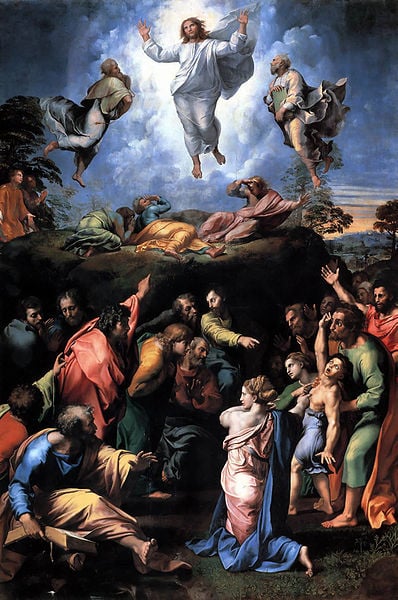
The transfiguration was a vision of the passing away of the Old Covenant glory, symbolized by the departing of Moses and Elijah…Luke 9:33; thereby making way for the greater New Covenant glory of the Lord Jesus Christ.
The Ascension and Christ at the Transfiguration
The Transfiguration Was a Vision of the Passing Away of the Old Covenant Age
- Mat 17:2 KJV And was transfigured before them: and his face did shine as the sun, and his raiment was white as the light.
Mat 17:3-5 KJV And, behold, there appeared unto them Moses and Elias talking with him. 4 Then answered Peter, and said unto Jesus, Lord, it is good for us to be here: if thou wilt, let us make here three tabernacles; one for thee, and one for Moses, and one for Elias. 5 While he yet spake, behold, a bright cloud overshadowed them: and behold a voice out of the cloud, which said, This is my beloved Son, in whom I am well pleased; hear ye him.
Peter did not fully understand the significance of the vision. By suggesting three tabernacles, he may have thought the three persons were of equal greatness and stature.
Luk 9:35-36 KJV And there came a voice out of the cloud, saying, This is my beloved Son: hear him. 36 And when the voice was past, Jesus was found alone. And they kept it close, and told no man in those days any of those things which they had seen.
However, Peter was left in no doubt as to whom the greatest glory belonged when the voice of the Lord spoke out of the cloud.
Heb 8:13 KJV In that he saith, A new covenant, he hath made the first old. Now that which decayeth and waxeth old is ready to vanish away.
The transfiguration was a vision of the passing away of the Old Covenant glory, symbolised by the departing of Moses and Elijah…Luke 9:33; thereby making way for the greater New Covenant glory of the Lord Jesus Christ.
When did the Old Covenant vanish away? It ended at the time of the destruction of the temple, Jerusalem, and the dispersion of the Jews in AD 70.
Since Jesus promised to return during the lifetime of His generation, we must concur that the second coming of Christ and the establishment of the New Covenant Age took place simultaneously.
The Transfiguration Was Also a Vision of the Glorified Christ of the Parousia
- 2Pe 1:16 KJV For we have not followed cunningly devised fables, when we made known unto you the power and coming of our Lord Jesus Christ, but were eyewitnesses of his majesty.
Peter in his 2nd Epistle was able to proclaim to the scoffers he was an eyewitness of 'Christ's majesty’. He had seen the glorified Christ and preached His imminent return with conviction.
Luk 19:15 KJV And it came to pass, that when he was returned, having received the kingdom, then he commanded these servants to be called unto him, to whom he had given the money, that he might know how much every man had gained by trading.
'having received the kingdom' Although the ascension concluded Jesus’ earthly ministry as He entered into the heavenly Holy of Holies, it was the commencement of His heavenly priesthood and kingship.
The parousia was a glorious occasion when the ‘King of Kings and Lord of Lords’ returned having received His Kingdom.
The Conversion of St Paul
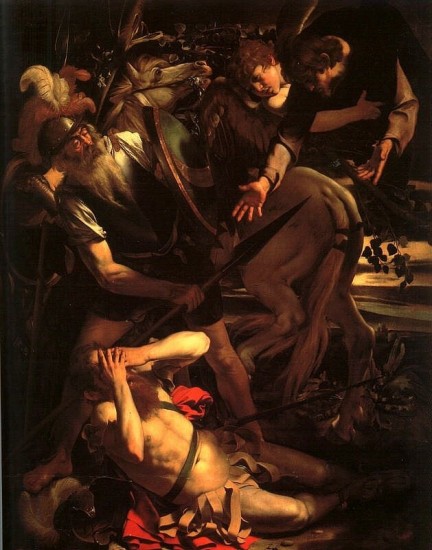
The Ascension and Paul's Vision of Christ
Act 9:3-7 KJV And as he journeyed, he came near Damascus: and suddenly there shined round about him a light from heaven: 4 And he fell to the earth, and heard a voice saying unto him, Saul, Saul, why persecutest thou me? 5 And he said, Who art thou, Lord? And the Lord said, I am Jesus whom thou persecutest: it is hard for thee to kick against the pricks. 6 And he trembling and astonished said, Lord, what wilt thou have me to do? And the Lord said unto him, Arise, and go into the city, and it shall be told thee what thou must do. 7 And the men which journeyed with him stood speechless, hearing a voice, but seeing no man.
'Who art thou, Lord?' No doubt Paul heard many first hand accounts and descriptions of Jesus, but he did not recognise this Jesus. The encounter left him trembling and astonished.
Once again, we have a vision of the glorified Christ. If Jesus was to return in His resurrection body, why do we constantly find manifestations of a transformed Christ after His ascension?
Noli me tangere
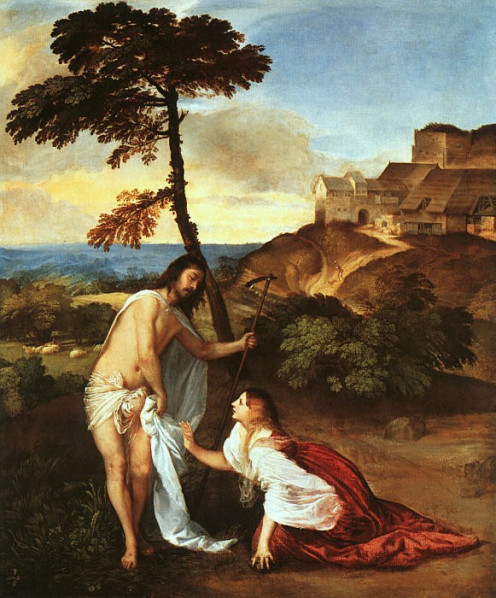
The Ascension and Christ at His Resurrection
Some scholars today teach that Jesus rose from the dead in His glorified body. In my opinion, Jesus rose from the dead in the same body placed in the tomb; His glorification took place after the ascension.
Others claim He received His glorified body having been taken up to heaven soon after the resurrection, but prior to His ascension. This is based on their interpretation of John 20:17.
Joh 20:17 KJV Jesus saith unto her, Touch me not; for I am not yet ascended to my Father: but go to my brethren, and say unto them, I ascend unto my Father, and your Father; and to my God, and your God.
‘Touch me not’ Jesus did not restrain Mary from touching Him for any spiritual reason, He simply wanted Mary to go quickly and inform the dejected disciples of the good news of His resurrection.
A Quote from Adam Clarke's Commentary of the Bible
John 20:17 'Touch me not - Μη μου ἁπτου, Cling not to me. Ἁπτομαι has this sense in Job_31:7, where the Septuagint use it for the Hebrew דבק dabak, which signifies to cleave, cling, stick, or be glued to. From Mat_28:9, it appears that some of the women held him by the feet and worshipped him. This probably Mary did; and our Lord seems to have spoken to her to this effect: “Spend no longer time with me now: I am not going immediately to heaven - you will have several opportunities of seeing me again: but go and tell my disciples, that I am, by and by, to ascend to my Father and God, who is your Father and God also. Therefore, let them take courage.'
Joh 20:27 KJV Then saith he to Thomas, Reach hither thy finger, and behold my hands; and reach hither thy hand, and thrust it into my side: and be not faithless, but believing.
'Thomas, Reach hither thy finger' It is assumed because Jesus discouraged Mary from touching Him, but later invited Thomas to thrust his hand into His side, that He had ascended to His Father during the intervening period.
- Mat 28:9-10 KJV And as they went to tell his disciples, behold, Jesus met them, saying, All hail. And they came and held him by the feet, and worshipped him. 10 Then said Jesus unto them, Be not afraid: go tell my brethren that they go into Galilee, and there shall they see me.
However, in Matthew's account of the resurrection, Jesus did not forbid the women from touching or worshipping Him! Therefore, the change in His appearance took place at His glorification after the ascension.
Jesus Walking on the Sea
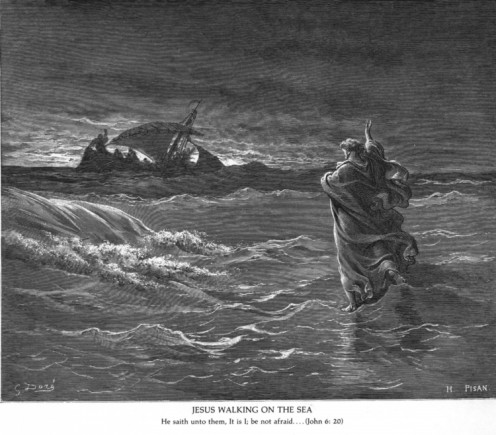
Christ in the Midst v Walking on the Sea
Joh 20:26 KJV And after eight days again his disciples were within, and Thomas with them: then came Jesus, the doors being shut, and stood in the midst, and said, Peace be unto you.
'the doors being shut' It is also unsustainable to claim that Jesus’ resurrected body was His glorified body because He could appear in a room with all the doors closed.
- Mat 14:26 KJV And when the disciples saw him walking on the sea, they were troubled, saying, It is a spirit; and they cried out for fear.
The occasion when Jesus walked on the sea repudiates this; it was equally miraculous and occurred prior to the resurrection.
The motive behind this hypothesis is to support the eschatological position held by scholars who demand a less glorified Christ, to accommodate their theory that Christ in His resurrection form will sit in the temple in Jerusalem during the 'millennium'.
Act 2:34-35 KJV For David is not ascended into the heavens: but he saith himself, The LORD said unto my Lord, Sit thou on my right hand, 35 Until I make thy foes thy footstool.
‘Sit thou on my right hand’ Christ's enthronement did not happen directly after His resurrection; Jesus spent forty days with His disciples before that glorious event.
Jesus was to be King not only over Israel; He was to be King of Kings.
Peter declared Christ's resurrection from the dead…Acts 2:22, and thereby Jesus was the recipient of the promise made to David that his descendant would sit on his throne…Acts 2:30-33.
Where was the throne located?
Peter made it clear; the Messiah would sit on the throne of David in heaven, not on earth.
Christ now appears in all the glory of His deity, not as He was before or after the resurrection, but as He is since His ascension and glorification!
The Ascension and the Glorified Christ
- Joh 17:5 KJV And now, O Father, glorify thou me with thine own self with the glory which I had with thee before the world was.
After His ascension, Christ received the glory that was His before the foundation of the world. Once again adorned with the resplendent glory of the second person of the Trinity.
Php 2:9-11 KJV Wherefore God also hath highly exalted him, and given him a name which is above every name: 10 That at the name of Jesus every knee should bow, of things in heaven, and things in earth, and things under the earth; 11 And that every tongue should confess that Jesus Christ is Lord, to the glory of God the Father.
The Father highly exalted Him in recognition of His triumph over sin and 'the death'.
The Ascension and the Cloud of the Lord
The significance of the ‘cloud of the Lord’ is the only common denominator. The theophanic cloud of the Lord was the visible manifestation of the divine presence.
The Old Covenant 'Cloud of the Lord'
Exo 24:17-18 KJV And the sight of the glory of the LORD was like devouring fire on the top of the mount in the eyes of the children of Israel. 18 And Moses went into the midst of the cloud, and gat him up into the mount: and Moses was in the mount forty days and forty nights.
'Moses went into the midst of the cloud, and gat him up unto the mount’ Here we find an Old Testament type and foreshadow of Christ and His ascension. Moses entered the cloud and returned after ‘forty' days; a cloud also conveyed Christ into Heaven, and He returned after 'forty' years.
Exo 34:29 KJV And it came to pass, when Moses came down from mount Sinai with the two tables of testimony in Moses' hand, when he came down from the mount, that Moses knew not that the skin of his face shone while he talked with him.
Moses not only ascended the mount, but while there he received the Old Covenant, likewise when Christ ascended to the Father, He received the New Covenant.
Exo 34:30 KJV And when Aaron and all the children of Israel saw Moses, behold, the skin of his face shone; and they were afraid to come nigh him.
Rev 1:16 KJV And he had in his right hand seven stars: and out of his mouth went a sharp twoedged sword: and his countenance was as the sun shineth in his strength.
Moses’ appearance changed having been in the presence of the Lord, the appearance of Jesus at His return was even more glorious.
The New Covenant 'Cloud of the Lord'
2Co 3:7-11 KJV But if the ministration of death, written and engraven in stones, was glorious, so that the children of Israel could not steadfastly behold the face of Moses for the glory of his countenance; which glory was to be done away: 8 How shall not the ministration of the spirit be rather glorious? 9 For if the ministration of condemnation be glory, much more doth the ministration of righteousness exceed in glory. 10 For even that which was made glorious had no glory in this respect, by reason of the glory that excelleth. 11 For if that which is done away was glorious, much more that which remaineth is glorious.
'much more that which remaineth is glorious' The New Covenant glory eclipsed the glory of the Old Covenant.
The glorified Christ returned in majesty on the ‘cloud of the Lord’, having neither the identical appearance with which He ascended, nor with a mere cumulus cloud.
Act 1:9 KJV And when he had spoken these things, while they beheld, he was taken up; and a cloud received him out of their sight.
Rev 14:14 KJV And I looked, and behold a white cloud, and upon the cloud one sat like unto the Son of man, having on his head a golden crown, and in his hand a sharp sickle.
A Quote from Baker's Evangelical Dictionary
‘The Old Testament. The Literal Cloud. Natural phenomena involving clouds are depicted occasionally in the Old Testament, but far from being only "natural," these are invariably linked with the direct activity of God…’‘The Theophanic/Eschatological Cloud. The remaining twenty-two New Testament occurrences of the word "cloud" appear in the context of theophany, and encompass six theologically crucial, eschatologically related events or visionary scenes in salvation history: (1) the pillar of cloud at the exodus, viewed as a type of Christian baptism in the time of eschatological fulfillment (1 Cor 10:1-2); (2) Jesus' transfiguration, as a foretaste of the kingdom of God, during which the Father appears and speaks in a cloud (Matt 17:5; Mark 9:7; Luke 9:34); (3) Jesus' ascension, explained by the angels as a paradigm for his return (Acts 1:9); (4) the "mighty angel" descending from heaven wrapped in a cloud, announcing (against the eschatological backdrop of (Dan 12:7) that time should be no longer (Rev 10:1); (5) the two resurrected witnesses ascending to heaven in a cloud, described in the context of the eschatological measuring of the temple of God (Rev11:12); and (6) Jesus' parousia, against the backdrop of Daniel 7:13, as the Son of Man coming with/on/in a cloud/the clouds/the clouds of heaven (Matt 24:30; 26:64; Mark 13:26;14:62; Luke12:54; 21:27; 1 Thess 4:17; Rev 1:7; 14:14-16)’.
Feedback
Has this Hub challenged you to search the Scriptures?
Conclusion
Mat 16:27 KJV For the Son of man shall come in the glory of his Father with his angels; and then he shall reward every man according to his works.
The effulgent glory of Christ's deity shone through at His return; that was not evident at the ascension. The emphasis at the second coming was the glorified Christ, coming in the glory of the Father.
What do you think?
Shine Jesus Shine
Alexander Gibb

© 2011 Alexander Gibb

